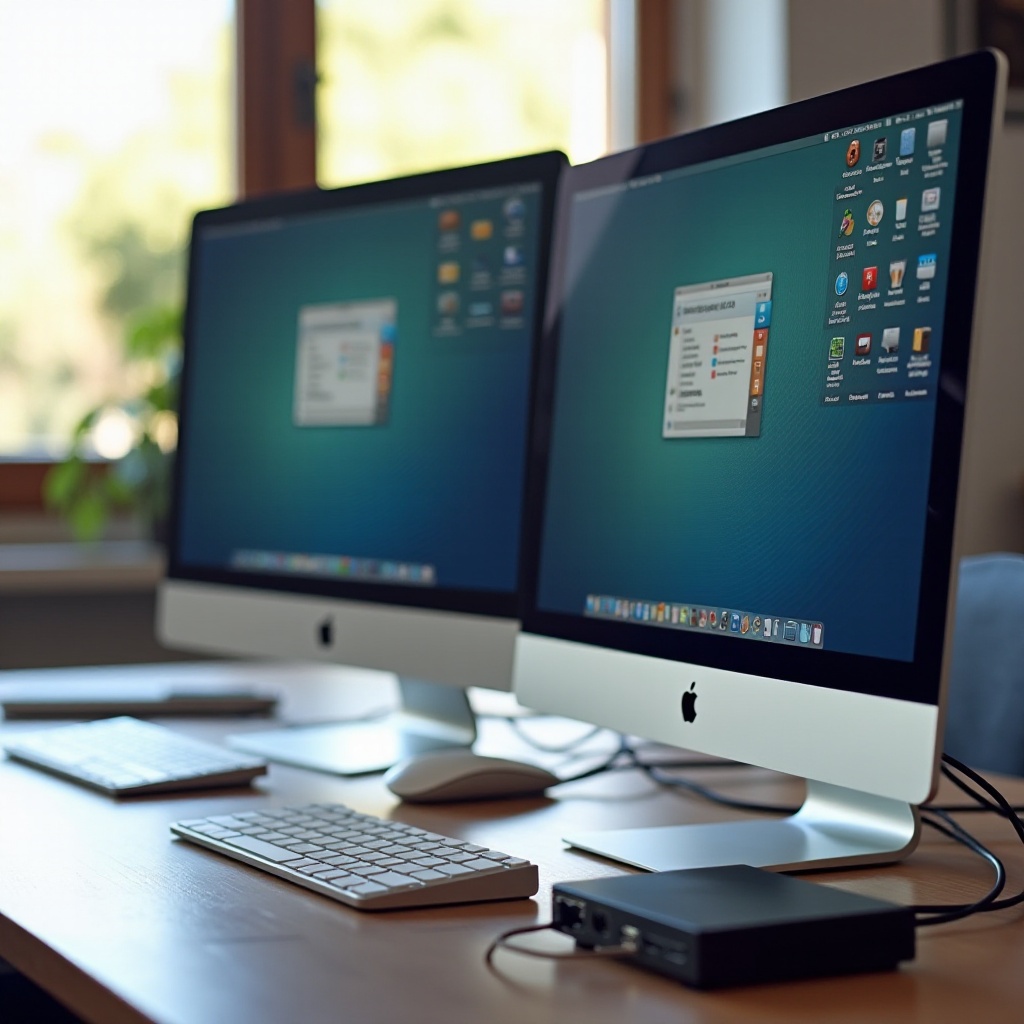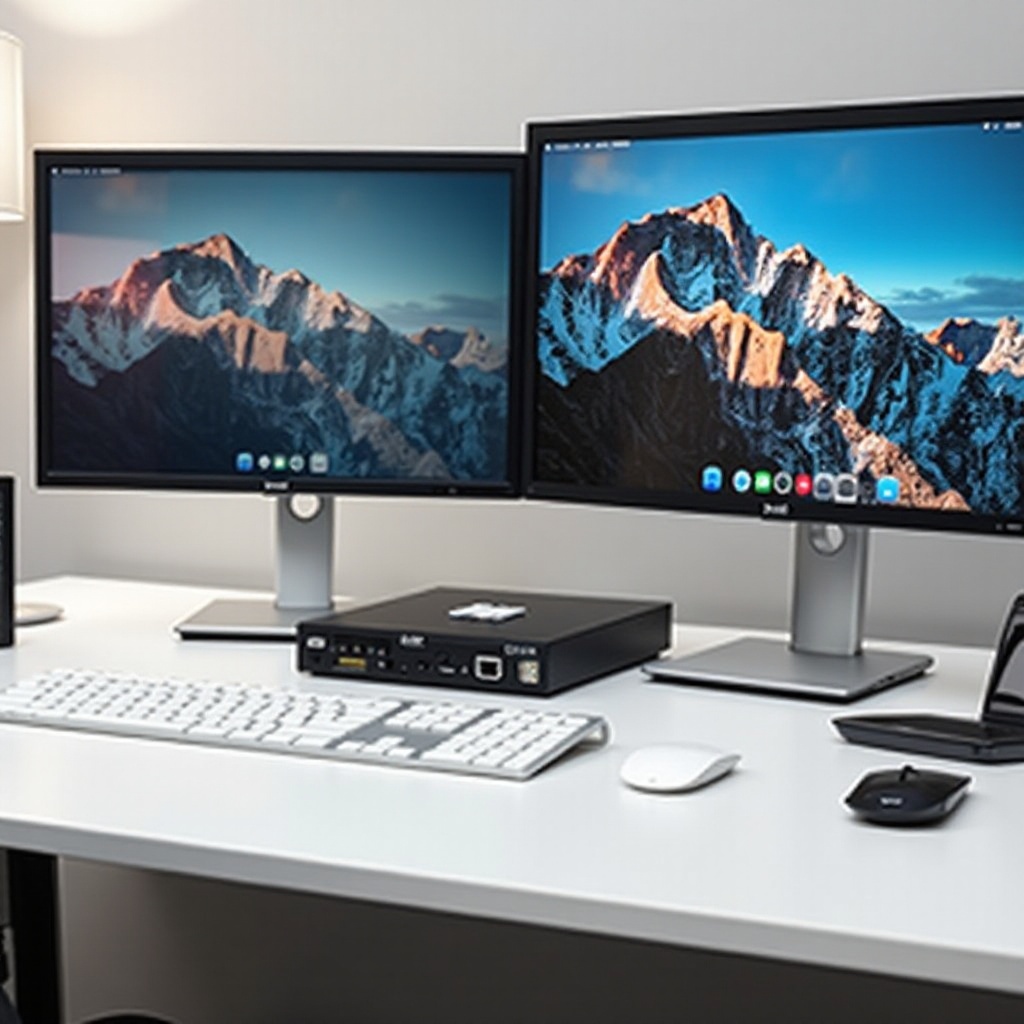Introduction
A dual monitor KVM switch can significantly improve workflow efficiency by allowing users to control two computers with a single set of peripherals. Whether you’re a professional with a multi-computer setup or a tech enthusiast, a KVM switch (Keyboard, Video, Mouse switch) could be the solution you didn’t know you needed. This guide will explain what KVM switches are, their benefits, how to choose the right one, setups, and expert tips for getting the most out of your dual monitor KVM switch.

Understanding KVM Switches
KVM switches serve as a central device, letting you control multiple computers from a single set of peripherals including a keyboard, monitor, and mouse. They work by seamlessly switching control over to the selected computer, enabling easy navigation between different computer systems without the hassle of multiple devices cluttering your workspace.
Here’s how they work:
– Connection: The KVM switch connects your computers to the switch’s ports.
– Switching: When you switch control, the KVM switch reroutes the peripherals to the chosen computer.
– Display and Control: Your monitors display the output of the selected computer, and your input devices now control that computer.
Understanding these basic functions will help you see how valuable and time-saving a dual monitor KVM switch can be for managing multiple systems with ease.
Benefits of Using KVM Switches for Dual Monitors
Adopting a dual monitor KVM switch in your setup comes with numerous advantages. Here are some of the key benefits:
- Increased Productivity: Quickly switch between different tasks on multiple computers without needing multiple sets of peripherals.
- Space and Cost Efficiency: Save on desk space and reduce clutter by using one set of peripherals for multiple computers. This setup can also reduce costs since you don’t need duplicate equipment.
- Seamless Control: Smooth transitions between machines make multitasking more efficient. Whether you are coding, designing, or managing several applications, the ease of control enhances your workflow.
- Enhanced Performance: High-quality KVM switches support advanced features like higher resolutions, rapid switching, and even audio sharing. This means your experience remains smooth and interruption-free, crucial for professional and gaming setups.
With these benefits in mind, let’s move on to choosing the right dual monitor KVM switch for your specific needs.
Choosing the Right KVM Switch
Selecting the perfect dual monitor KVM switch involves several considerations to ensure it meets your requirements. Here’s what you need to keep in mind:
- Compatibility: Ensure the KVM switch supports your operating system (OS). Most modern switches support multiple OS, but it’s always best to check.
- Number of Ports: Since you are looking to manage two computers, pick a switch with at least two ports. Also, determine if you’ll need additional USB ports for peripherals.
- Resolution Support: Check the maximum resolution supported by the KVM switch. For high-definition tasks or gaming, a switch that supports 4K resolutions might be necessary.
- Switching Mechanisms: Look for convenient switching options such as hotkeys, remote desktop access, or physical buttons on the switch.
- Audio Support: Some KVMs also switch audio signals, which is important if you need to manage multimedia tasks across different systems.
- Build Quality: Invest in a KVM switch constructed with durable materials to ensure longevity. Read reviews to gauge reliability.
After identifying the right switch, you’ll need to set it up correctly. Let’s discuss the setup process in detail next.
Setting Up Your Dual Monitors with Two Computers
Setting up your dual monitor KVM switch can be straightforward if you follow the proper steps. Here’s a guide to get you started:
- Unbox and Inspect: Open your KVM switch package and inspect the components. Ensure you have all necessary cables and accessories.
- Connect the Monitors: Attach the monitors to the KVM switch’s video output ports. Ensure both monitors are compatible with the KVM switch.
- Connect the Computers: Use the appropriate cables to connect each computer to the KVM switch’s input ports. Ensure connections are secure and firm.
- Link Peripherals: Attach your keyboard and mouse to the designated USB ports on the KVM switch.
- Power Up: Plug in the KVM switch’s power adapter and turn it on.
- Test Switching: Turn on both computers and test the switch by switching control between the two systems. Check if both monitors display correctly and if peripherals respond as they should.
By following these steps, you’ll be ready to use your dual monitor KVM switch effectively. Let’s next explore some additional tips and tricks to enhance your setup.

Tips and Tricks for Optimized Use
Maximize the efficiency of your dual monitor KVM switch with these tips:
- Hotkeys: Familiarize yourself with the hotkeys that allow swift transitions between computers. This can significantly reduce switching time.
- Firmware Updates: Regularly update the firmware to benefit from improvements and new features.
- Cable Management: Use cable ties to manage and organize all connections. This prevents tangling and ensures your setup looks clean and professional.
- Security: If your KVM switch supports secure switching, use it to protect sensitive data.
These tricks will help you maintain an efficient and orderly workspace, ensuring a smooth workflow.

Conclusion
A dual monitor KVM switch makes it easy to manage two computers without the hassle of multiple peripherals. By understanding KVM switches, their benefits, how to choose the right one, set up procedures, and useful tips, you can optimize your computing environment for enhanced productivity and efficiency.
Frequently Asked Questions
What are the key features to look for in a dual monitor KVM switch?
Look for compatibility with your operating systems, the number of ports required, high-resolution support, a variety of switching mechanisms, audio support, and good build quality.
How do you troubleshoot common issues with KVM switches?
Check all connections, update firmware, ensure the switch is powered, and verify that all devices are properly connected. If issues persist, consult the user manual or seek support from the manufacturer.
Can I use a dual monitor KVM switch for gaming setups?
Yes, a high-quality KVM switch that supports high resolutions and rapid switching is suitable for gaming. Ensure it has low latency and can handle the graphical demands of gaming.